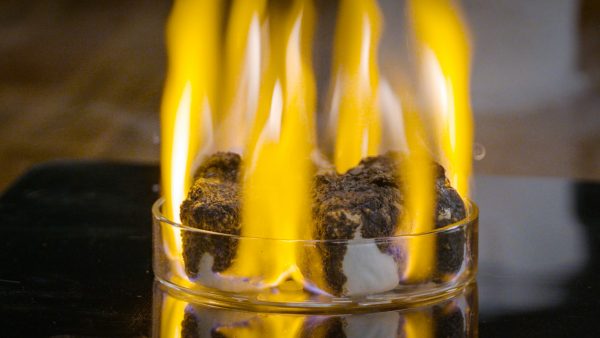Cellular Respiration Definition
Cellular respiration converts stored energy into usable energy for survival. For example, it breaks down sugars to produce energy.
View Lesson on Photosynthesis & Respiration
Become a member to get full access to our entire library of learning videos, reading material, quiz games, simple DIY activities & more.
Become a member to get full access to our entire library of learning videos, quiz games, & more.
Plans & Pricingto watch this full video.

Access All Videos
and Lessons, No Limits.
Access All Videos

No credit card required,
takes 7 sec to signup.
No card required

Ready-to-go lessons
that save you time.
Ready-to-go lessons
If you are on a school computer or network, ask your tech person to whitelist these URLs:
*.wistia.com, fast.wistia.com, fast.wistia.net, embedwistia-a.akamaihd.net
Sometimes a simple refresh solves this issue. If you need further help, contact us.
Photosynthesis & Respiration
Fun Facts
- Both plants and animals go through cellular respiration to use stored energy.
- When trees lose their leaves, they go through cellular respiration to use their stored energy to stay alive.
- Occurs in the mitochondria, known as the powerhouse of the cell.
Why Do We Need To Know About Cellular Respiration
Learning about cellular respiration helps you know how living things make and use energy. This is important for science and making green energy sources.
Cellular respiration is a key life process and helps scientists make better biofuels and solar panels. This work helps people in renewable energy, helping the environment, and studying tiny life parts, showing how important biology is in real life.
Frequently Asked Questions
Check out the Full Lesson on Photosynthesis & Respiration
In this lesson, we learn that:
- Plants carry out photosynthesis to make sugar from carbon dioxide and water.
- In cellular respiration, living things use sugar to produce energy.
- Matter cycles in an ecosystem through photosynthesis & cellular respiration.
Related Topics
- Air Mass Definition
- Biodiversity Definition
- Cell Definition
- Cellular Respiration Definition
- Chloroplast Definition
- Chloroplasts Definition
- Continental Drift Definition
- Corona Definition
- Definition Of Force
- Fertilizer Definition
- Force Definition
- Fossil Definition
- Frequency Definition
- Greenhouse Gases Definition
- Habitat Definition
- Hearing Definition
- Inclined Plane Definition
- Internal Structures Definition
- Keystone Species Definition
- Landform Definition
- Landslide Definition
- Lunar Eclipse Definition
- Lunar Mare Definition
- Magma Definition
- Magnetic Field Definition
- Magnetism Definition
- Melting Definition
- Multicellular Definition
- Newton’s 2nd Law Of Motion Definition
- Nonrenewable Resource Definition
- Pendulum Definition
- Photosynthesis Definition
- Physical Map Definition
- Pull Definition
- Pulley Definition
- Recycle Definition
- Reversible Change Definition
- Sediment Filter Definition
- Seed Definition
- Signal Definition
- Star Definition
- Sun Definition
- Symbiosis Definition
- Taxonomy Definition
- Total Eclipse Definition
- Weather Front Definition
- Weather Map Definition
- Weathering Definition
Start a Free Trial Today. Get a $5 Amazon Gift Card!
Teachers! Start a free trial & we'll send your gift card within 1 day. Only cards left. Try it now.
Select Grade
Select Subject
This email is associated with a Science Kit subscription. Kit subscriptions are managed on this separate page: Manage Subscription

-
Download InvoiceScience & Math$/yr
-
Download InvoiceScience Only$/yr

access all lessons
• No credit card required •
"My students loved the videos. I started the video subscription in May and used them as a review before the state test, which I know contributed to 100% of my class passing the state test."
Rhonda Fox 4th Grade Teacher, Ocala, Florida
Use Generation Genius in Your School
Access all lessons free for 30 days.
"My students loved the videos. I started the video subscription in May and used them as a review before the state test, which I know contributed to 100% of my class passing the state test."
Rhonda Fox 4th Grade Teacher, Ocala, Florida
• No credit card required •
Already a member? Sign In
* no credit card required *

* no credit card required *
* no credit card required *


to Discover the Benefits of Generation Genius
Learn How to Save for Your School & District!

no credit card required
Skip, I will use a 3 day free trial
Enjoy your free 30 days trial
-
Unlimited access to our full library
of videos & lessons for grades K-5. -
You won’t be billed unless you keep your
account open past your 14-day free trial. -
You can cancel anytime in 1 click on the
manage account page or by emailing us.
-
Unlimited access to our full library of videos & lessons for grades K-5.
-
You won't be billed unless you keep your account open past 14 days.
-
You can cancel anytime in 1-click on the manage account page.
Cancel anytime in 1-click on the manage account page before the trial ends and you won't be charged.
Otherwise you will pay just $10 CAD/month for the service as long as your account is open.
Cancel anytime on the manage account page in 1-click and you won't be charged.
Otherwise you will pay $10 CAD/month for the service as long as your account is open.
We just sent you a confirmation email. Enjoy!
DoneWe use cookies to make your experience with this site better. By using this site you agree to our use of cookies. Click "Decline" to delete and block any non-essential cookies for this site on this specific property, device, and browser. Please read our privacy policy for more information on the cookies we use.Learn More
We use cookies to improve your experience. By using this site, you agree to our use of cookies. Click "Decline" to block non-essential cookies. See our privacy policy for details.Learn More




























































































































